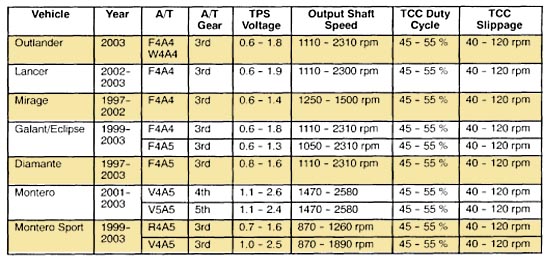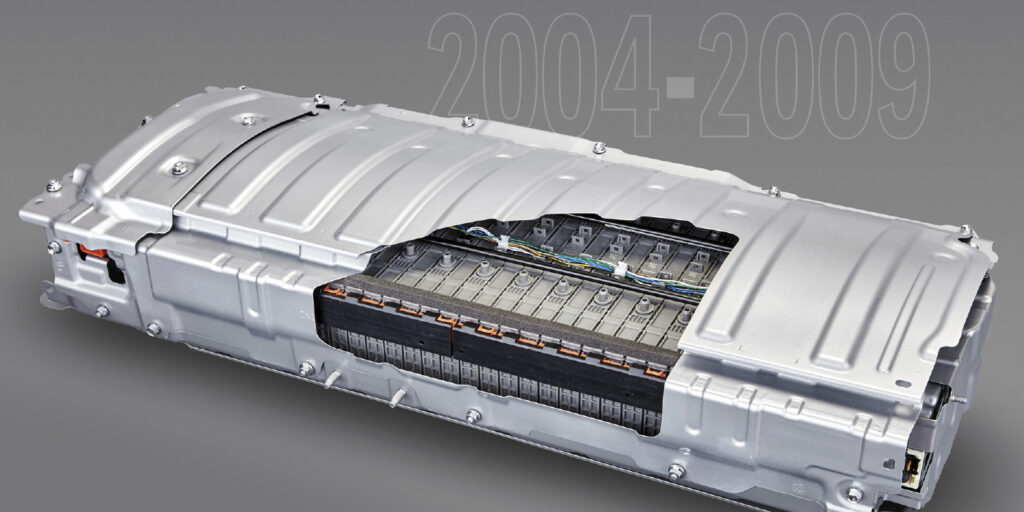Paul and Jody look forward to spending time with their kids away from the hustle and bustle of the city. After returning from a fun-filled weekend of camping in their 2003 Outlander, Paul called to ask about a problem he had noticed. He said that when navigating through crazy Friday afternoon traffic, the car would “shudder” during acceleration. Paul wasn’t overly concerned about it, but I’m glad he called — that little shudder could have turned into something more serious.
Some customers may complain of shudder, surge and/or vibration (possibly intermittent) when driving 35-50 mph (56-80 kph) at steady throttle. This may be due to the breakdown of the A/T fluid, creating a torque converter damper clutch shudder, which can be eliminated by following the repair procedure.
Mitsubishi SP-III Automatic Transmission Fluid will be required to complete the repair.
Applicable Vehicles:
2003 Outlander
2002-’03 Lancer
1997-2002 Mirage
1999-2003 Galant
2000-’03 Eclipse
2001-’03 Eclipse Spyder
1997-2003 Diamante
2001-’03 Montero
1999-2003 Montero Sport
Note: On 1999 Montero Sport RWD models, partial torque converter lock-up can also cause rear leaf spring chatter.
Repair Procedure:
Note: The information in this procedure applies only to SP-III ATF. The friction coefficient of SP-III is about 10% lower than that of SP-II.
1. Test-drive the vehicle to determine whether the shudder/surge/vibration is an engine or transmission concern. Be sure the engine reaches operating temperature. Then turn off the engine and inspect for engine mechanical problems. Check engine base settings and adjust if needed.
b. If the shudder/surge/vibration is a transmission concern, not an engine concern, continue with step 2.
2. Test-drive the vehicle to determine whether the condition occurs during torque converter clutch partial lock-up. Use the scan tool data list to drive within the following parameters. ATF temperature must be 158° F (70° C) or higher.
Note the TCC duty cycle reading when the shudder/surge/vibration occurs. See Chart 1 below.
b. If shudder/surge/vibration does not occur when the TCC duty cycle is approximately 45-55%, diagnose for the following possible causes using an electronic vibration analyzer (Kent-Moore J-38792 or equivalent):
• Front axle vibration;
• Damage to A/T internal components; or
• Transfer case damage.
3. If shudder/surge/vibration occurs when the TCC duty cycle is approximately 45-55%:
b. Refill with new SP-III automatic transmission fluid. It’s important to use SP-III to eliminate torque converter damper clutch shudder.
c. With the engine idling and at normal operating temperature, check the ATF temperature by reading “A/T Temperature Sensor” on the scan tool data list. When the ATF temperature is between 158-176° F (70-80° C), the ATF level must be just below the “F” mark on the dipstick.
d. Test-drive the vehicle to confirm the repair. A small amount of vibration may still exist, which will eventually go away (with 1-60 minutes of driving) as the SP-Ill works into the clutch material.
If the shudder/surge/vibration condition continues even after the vehicle has been driven for 60 minutes after the repair, or if the customer later returns the vehicle with the same condition, replace the torque converter.
Written by ALLDATA Technical Editor, Eric Seifert. Eric is an ASE-certified Master Technician and engine machinist, with 20 years of independent shop and parts store experience.
For additional information, visit www.alldata.com.













